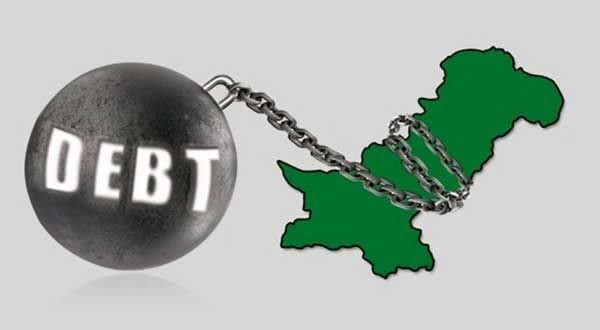Pakistan’s Public Debt
ISLAMABAD: In a detailed briefing to the Senate on Friday, Pakistan’s Ministry of Finance revealed a dramatic increase in the country’s public debt over the past 16 years.
According to the Finance Minister Muhammad Aurangzeb, the national debt, which stood at Rs6.1 trillion in 2008, has surged to Rs67.5 trillion by 2024. This represents a staggering rise of Rs61.4 trillion.
The Finance Minister attributed the substantial increase in public debt to several factors, including a primary deficit of Rs10.2 trillion, interest expenses amounting to Rs32.3 trillion, and adjustments related to exchange rates and accounting practices.
The Ministry of Finance also provided a breakdown of commercial bank loans, revealing that by June 2024, the total loans from commercial banks amounted to Rs38,531 billion, which constitutes 22.8% of the total loans. Of this, Rs27,246 billion were lent to the government sector, while loans to the private sector totaled Rs8,776 billion.
A closer examination of the debt figures shows a significant rise in both internal and external debt. In June 2008, internal debt was Rs3.3 trillion, and external debt was Rs2.9 trillion.
By June 2024, internal debt had surged to Rs43.4 trillion, and external debt had increased to Rs24.1 trillion. This marks a dramatic rise of Rs40.2 trillion in internal debt and Rs21.3 trillion in external debt.
The details provided by the Finance Ministry indicate that loans have increased by Rs10.2 trillion due to the primary deficit, Rs32.3 trillion due to interest expenses, and Rs18.9 trillion due to other factors.
Government debt figures show a consistent upward trend: from Rs6.1 trillion in 2008, it rose to Rs12.7 trillion in 2013, and further to Rs25 trillion in 2018. By 2019, the debt had reached Rs32.7 trillion, and it continued to escalate to Rs49.2 trillion by 2022.
By 2023, the government debt had climbed to Rs62.9 trillion, and by March 2024, it had reached Rs67.5 trillion.
The rise in debt has been accompanied by significant increases in interest expenditures. In 2021, interest payments were Rs2.8 trillion, which increased to Rs5.5 trillion by March 2024.
The Finance Ministry clarified that the borrowing in the fiscal years 2021-22, 2022-23, and 2023-24 had not exceeded the combined figures of the previous two years.
Specifically, public debt increased by Rs9.4 trillion in FY 2021-22, Rs13.7 trillion in FY 2022-23, and Rs8.4 trillion in FY 2023-24.
Furthermore, the ministry refuted claims that all tax revenue was allocated to debt repayment. It reported that in 2021-22, Federal Board of Revenue (FBR) tax revenue increased by Rs6.1 trillion, while interest expenses were Rs3.2 trillion.
In 2022-23, FBR tax revenue rose by Rs7.2 trillion, and interest expenditure increased to Rs5.7 trillion. For the fiscal year 2023-24, FBR tax revenue surged by Rs9.3 trillion, with interest expenses rising to Rs8.3 trillion.
As of the end of June 2024, loans to government institutions amounted to Rs2,139 billion, representing 5.6% of the total loans.
The Finance Ministry also highlighted efforts to expand the taxpayer base, with more than 3.5 million taxpayers registered in 2023. The target is to increase this number to 4.5 million by 2028-29.


